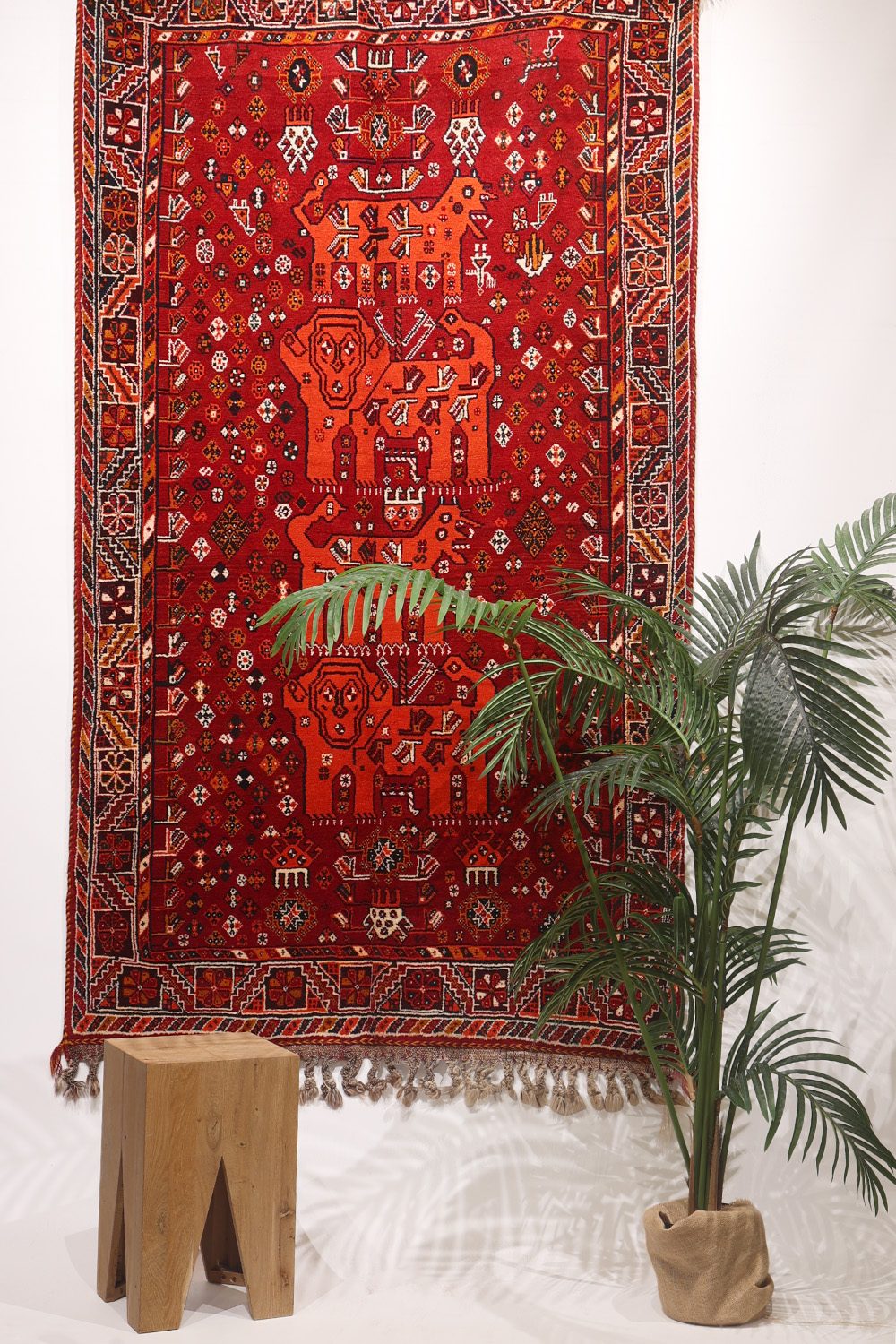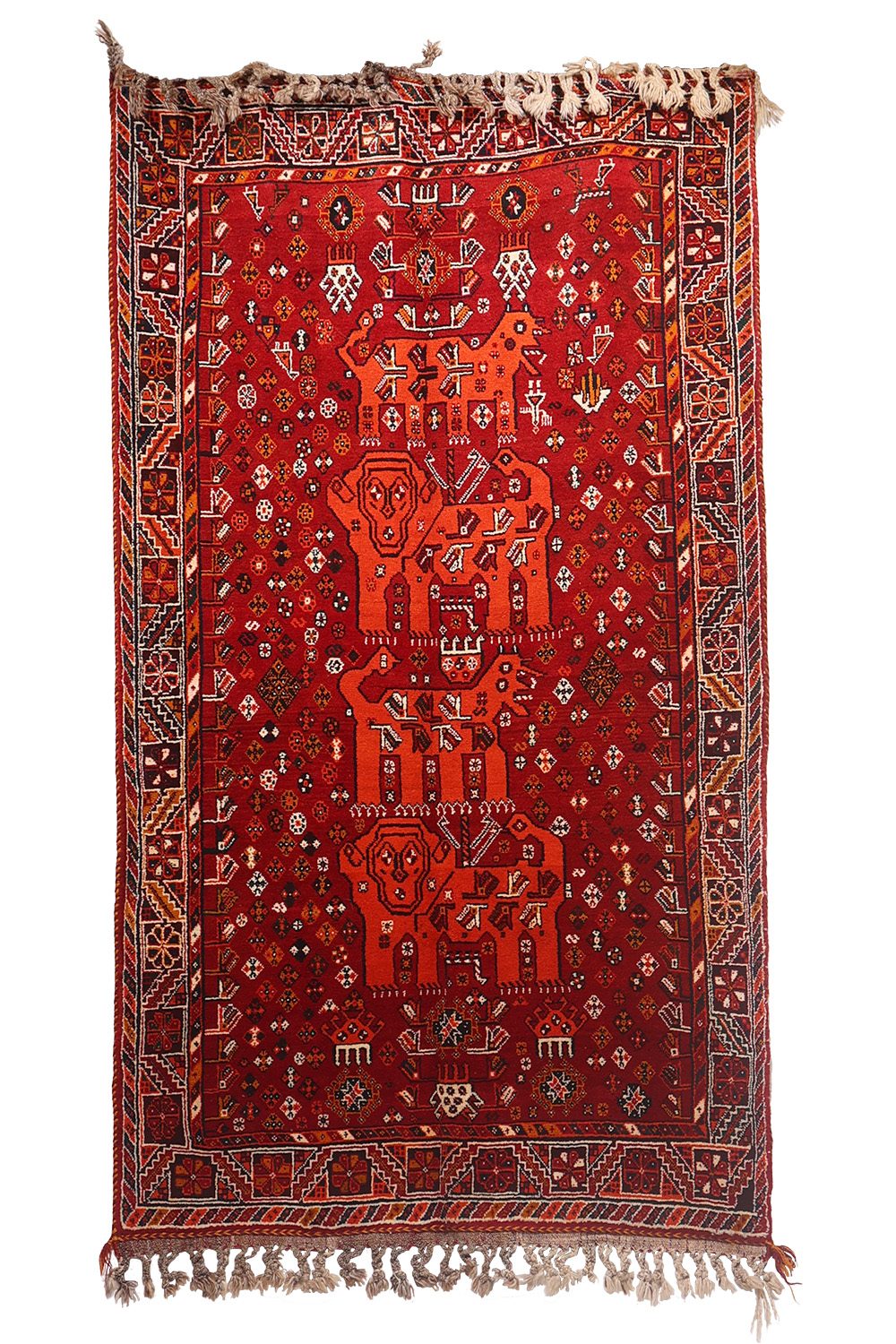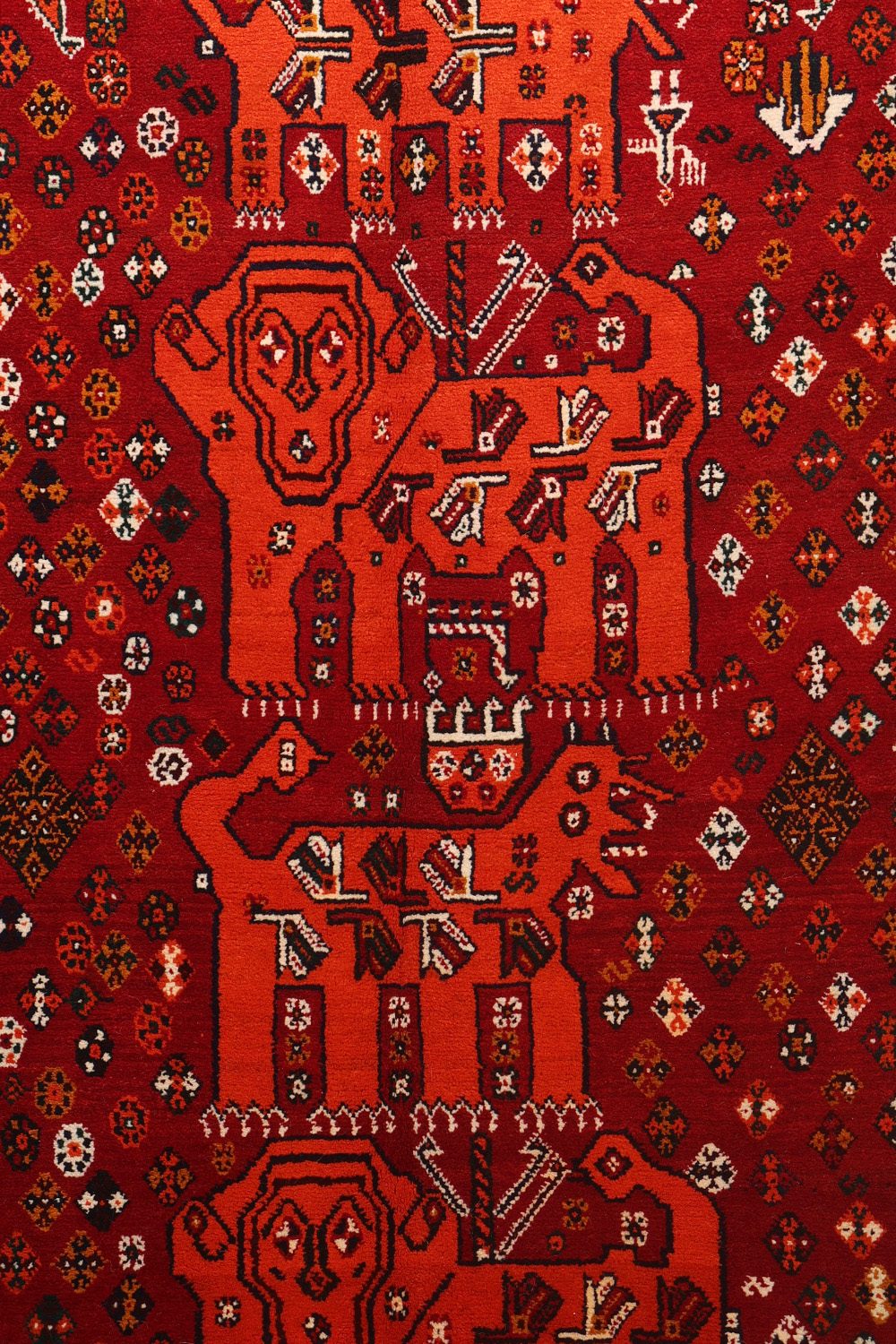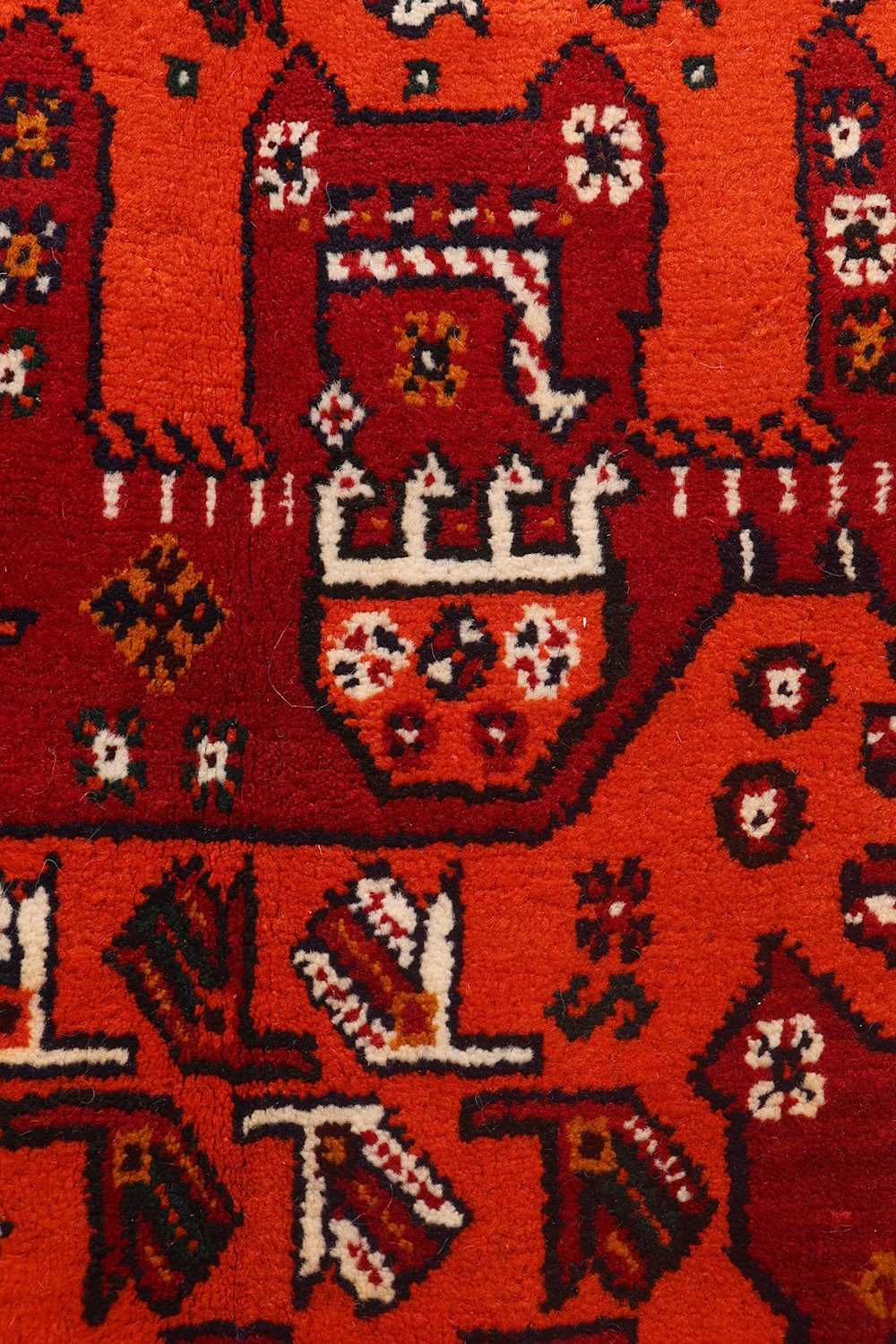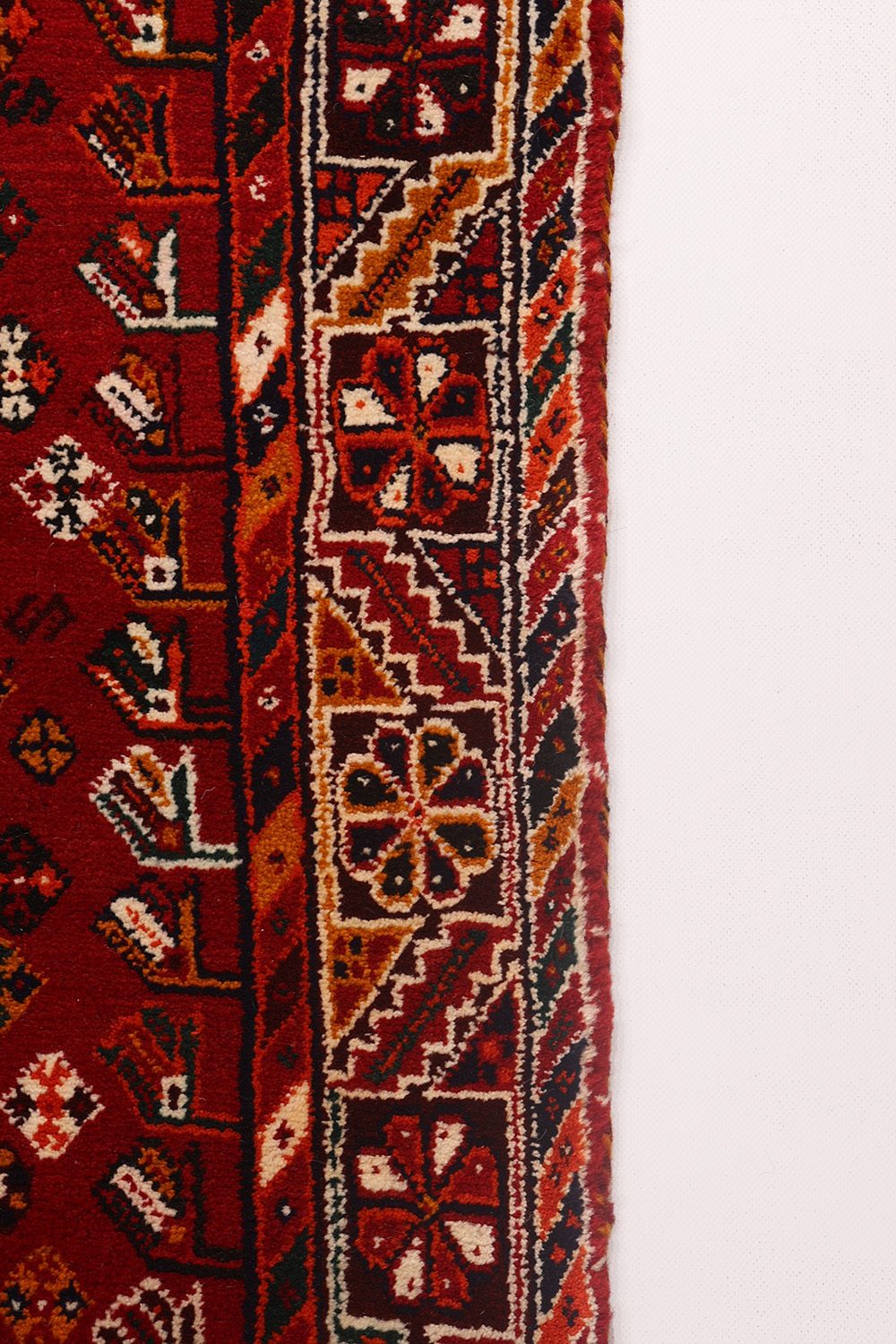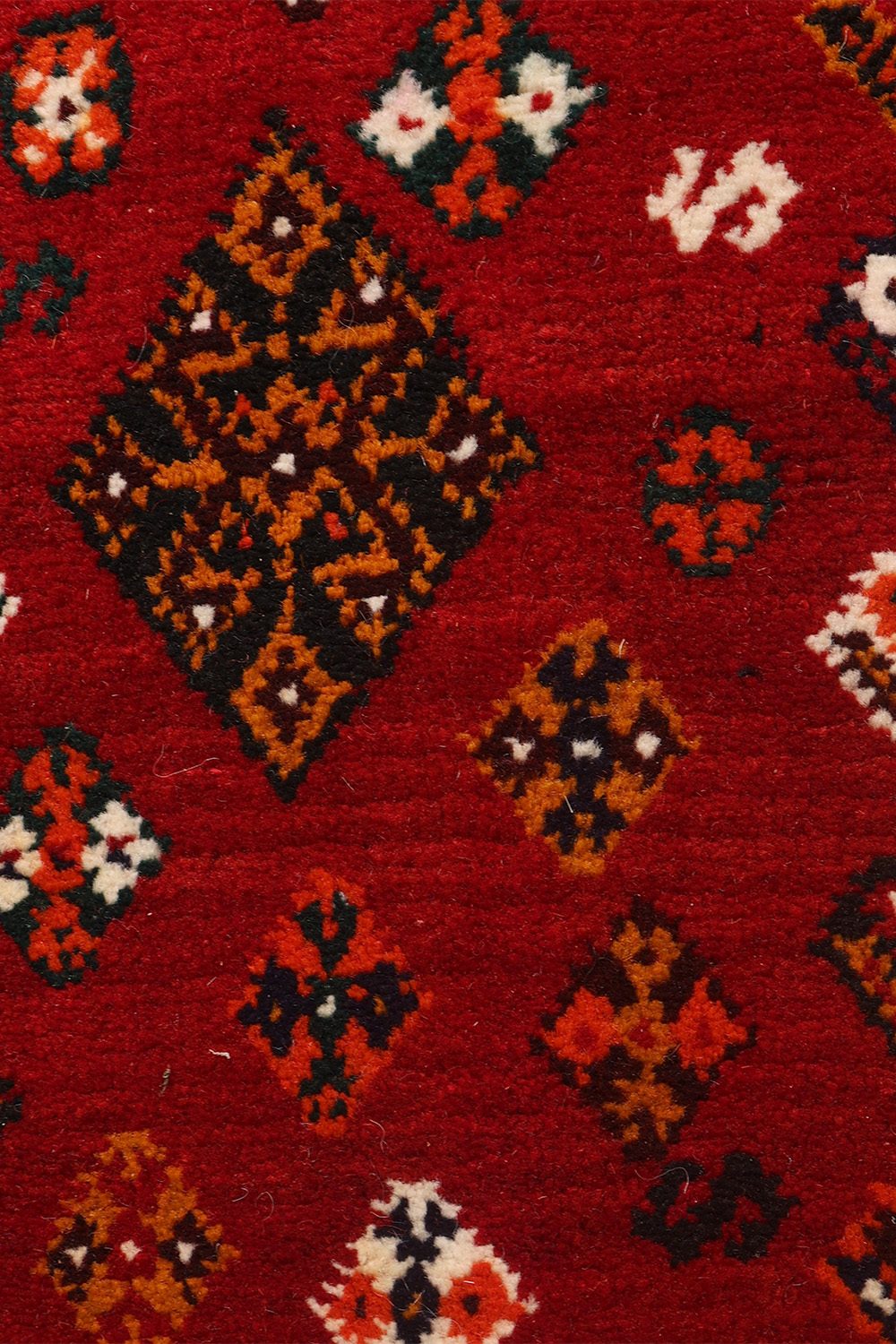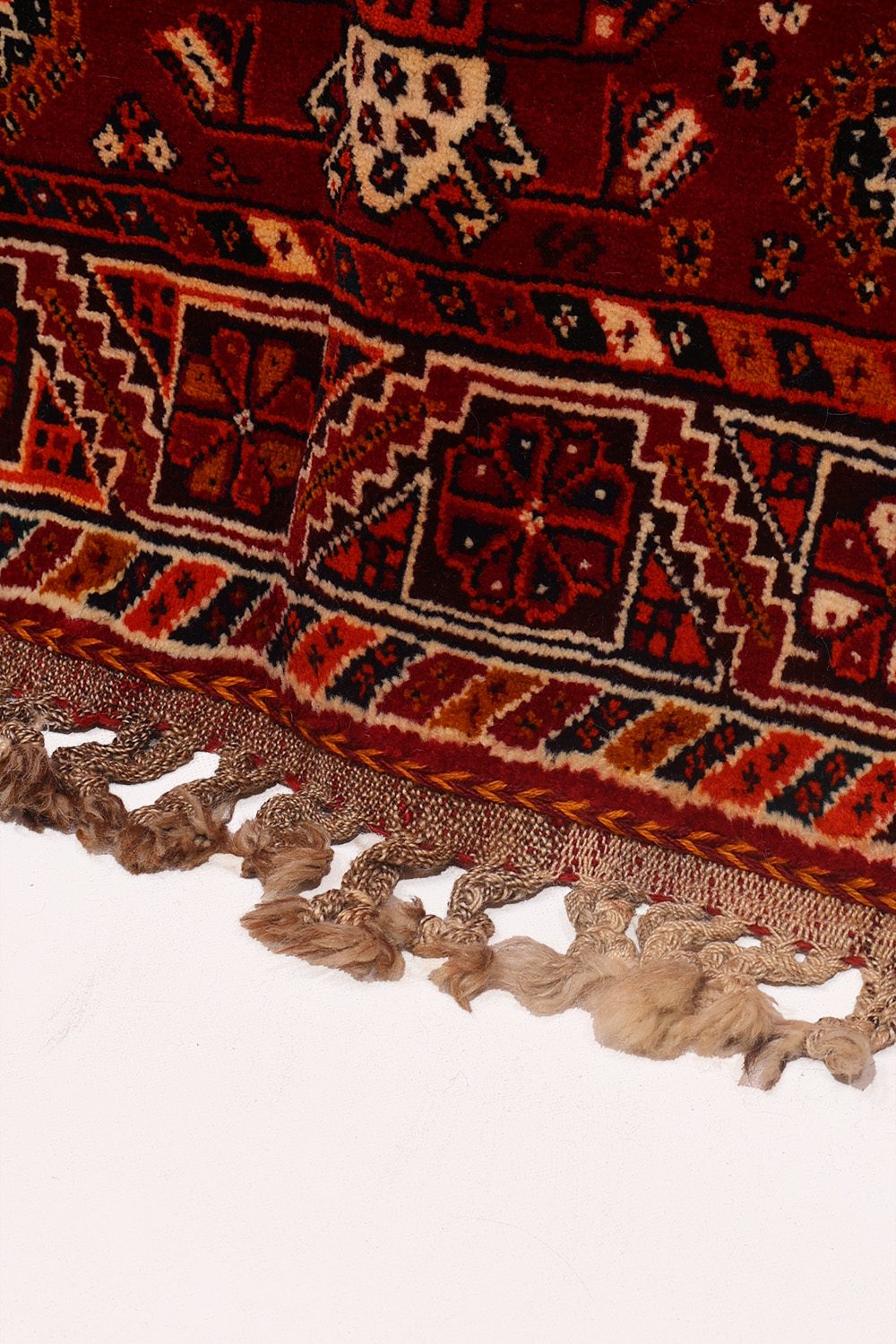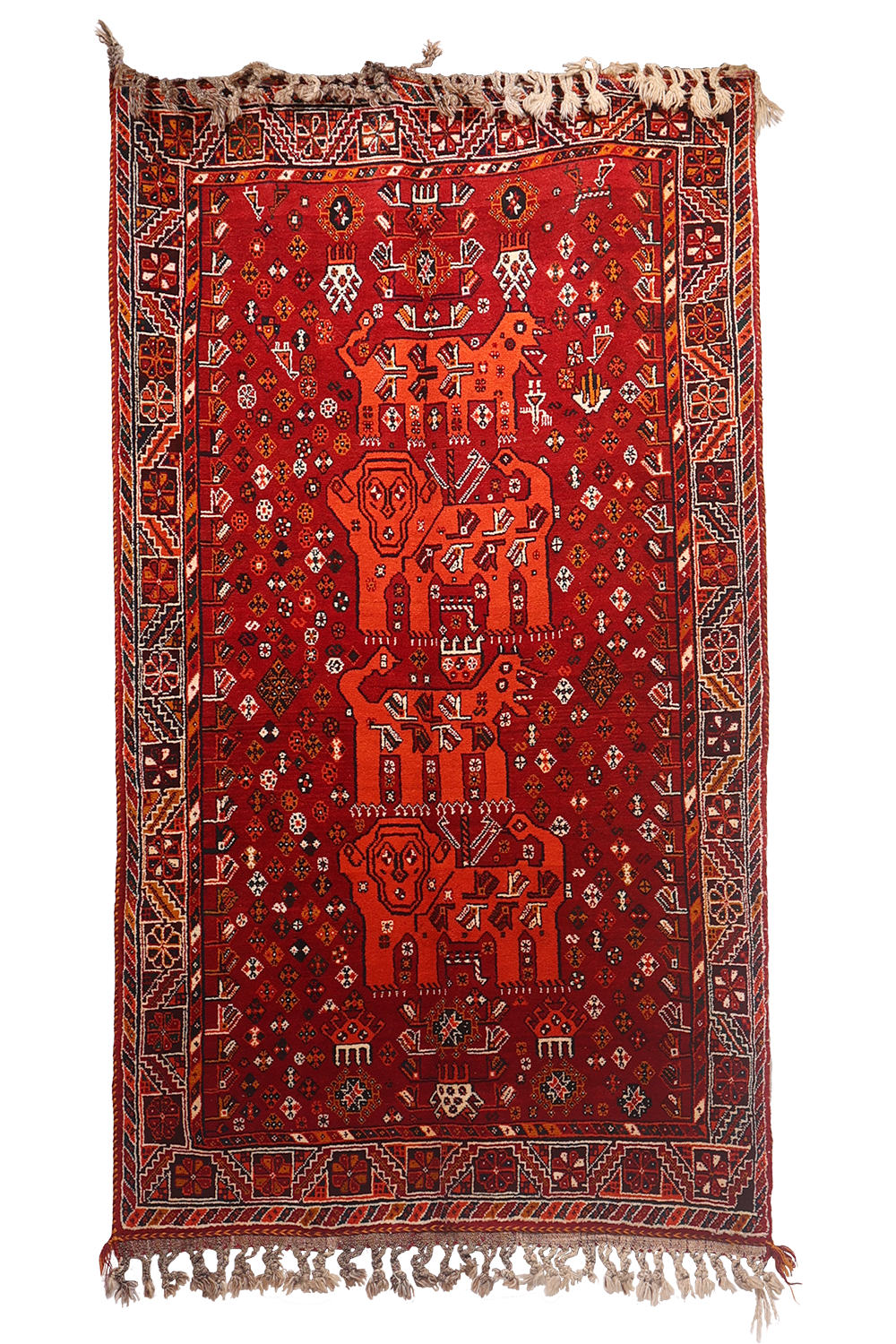1,350.00 €
Introducing a playful and vibrant vintage Qashqai lion rug. The main field is dominated by four large lions—two female lionesses facing right and two male lions looking forward. These happy felines reside in a lush landscape filled with flowers, trees, geometric motifs, birds, and goats. Their pelts are richly adorned with vegetable motifs, and the weaver’s whimsical touch is evident in the flower-drawn mouths of both male and female lions.
The border, framing the wild and lively central field, offers a more symmetrical and organized design, providing a pleasing balance to the rug. Crafted from top-quality wool with original, intact fringes, this rug is both durable and luxurious.
If you’re seeking a conversation piece that will captivate your guests, this is the perfect choice!
Material: 100% hand-spun sheep wool
Size: 221×126 cms
Origin: Qashqai tribe, Iran
Date of weaving: 1970s
Never having had a commercial aspect, the Lion Carpets were woven only in relatively small numbers, but at the same time with great freedom of imagination. If one remembers that the weavers, women and girls of the tribes, rarely if ever saw a real lion, and that much of their conception and guidance in weaving the Lion Carpets of necessity came from animals with which they were familiar, it is hardly surprising that there are often strong resemblances between elements of their lions and the domesticated animals which were a part of their daily life.
A love of variety and an innate creativity at times took the makers of our Lion Carpets beyond the limits of nature when fashioning them. We find green, black, and flowered lions and some composed of elements from several different kinds of animals and even on occasion, human features. These and other characteristics must be seen as born of the rich imagination and skill of the weavers themselves.
Since weaving among the tribes is the work of women and girls, many of the peculiarities of the lions, such as the great love of a variety of colours and the great delicacy displayed at the same time, must be seen as the product of the nature and temperament of the weavers themselves.
With a few exceptions, the dyes employed in them were all natural and came from plants and materials of the region inhabited by the tribes.
In most of our carpets the lion is the principal subject and perhaps can be compared with an asymmetrical medallion which dominates the elements of the background. The filling of the field by means of other animals and plants helps to create the effect of a forest or thicket and contrasts nicely with the splendour and might of the lion. In some of the Lion Carpets, the repetition of the lion is reminiscent of the widely seen repeating floral design, and any lack of symmetry is masterfully compensated for by the wise use of colours and secondary designs.
The great skill displayed in such compositions in the context of Iranian traditional carpet-weaving is frequently astonishing•
Tribal weaving is done on the ground on horizontal looms without the benefit of cartoons. To start the weaving process, usually another carpet called the dastur (model) is brought. However the alterations that actually come about in time, whether from the choice of colours or in the composition, bring into being a new product different from the model used.
The simplification of lines and the geometricization of designs which are the hallmarks of tribal weaving gradually bring into being new designs, a fact readily apparent from one look at the present lions. Of them, those which have more nearly natural proportions must be. assigned to the last sixty years, because the acquisition by the tribes of pictures of lions and textiles with lion designs on them from some neighbouring countries about the time of the First World War spread the form of the lion in nature among them. The similarity of these lions with those of nature had a profound effect on the lions woven by the tribesmen in that they were inspired to produce more naturalistic lions. But not long afterwards the British blanket lion underwent a synthesis with the local tradition of lions and was remade into something original and engaging and was fully assimilated into the tribal culture of Fars.
The traditions of Lion Carpet weaving gradually lapsed at about the same time the custom of making stone lions ceased and the race of lions itself died out.
Parviz Tanavoli, “Lion Rugs from Fars
1 in stock
Additional information
| Weight | 12 kg |
|---|
Subscribe and receive the lastest news
